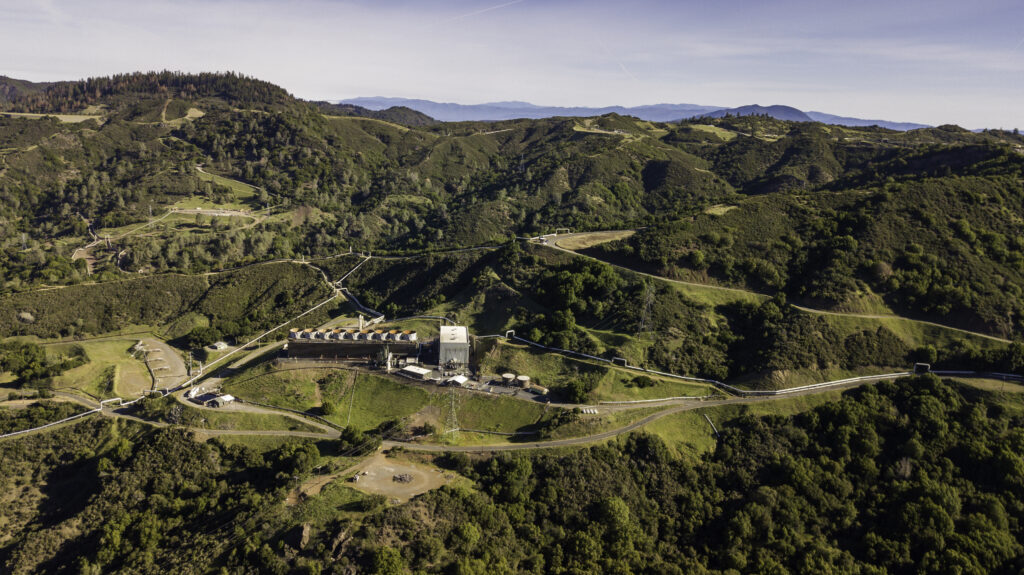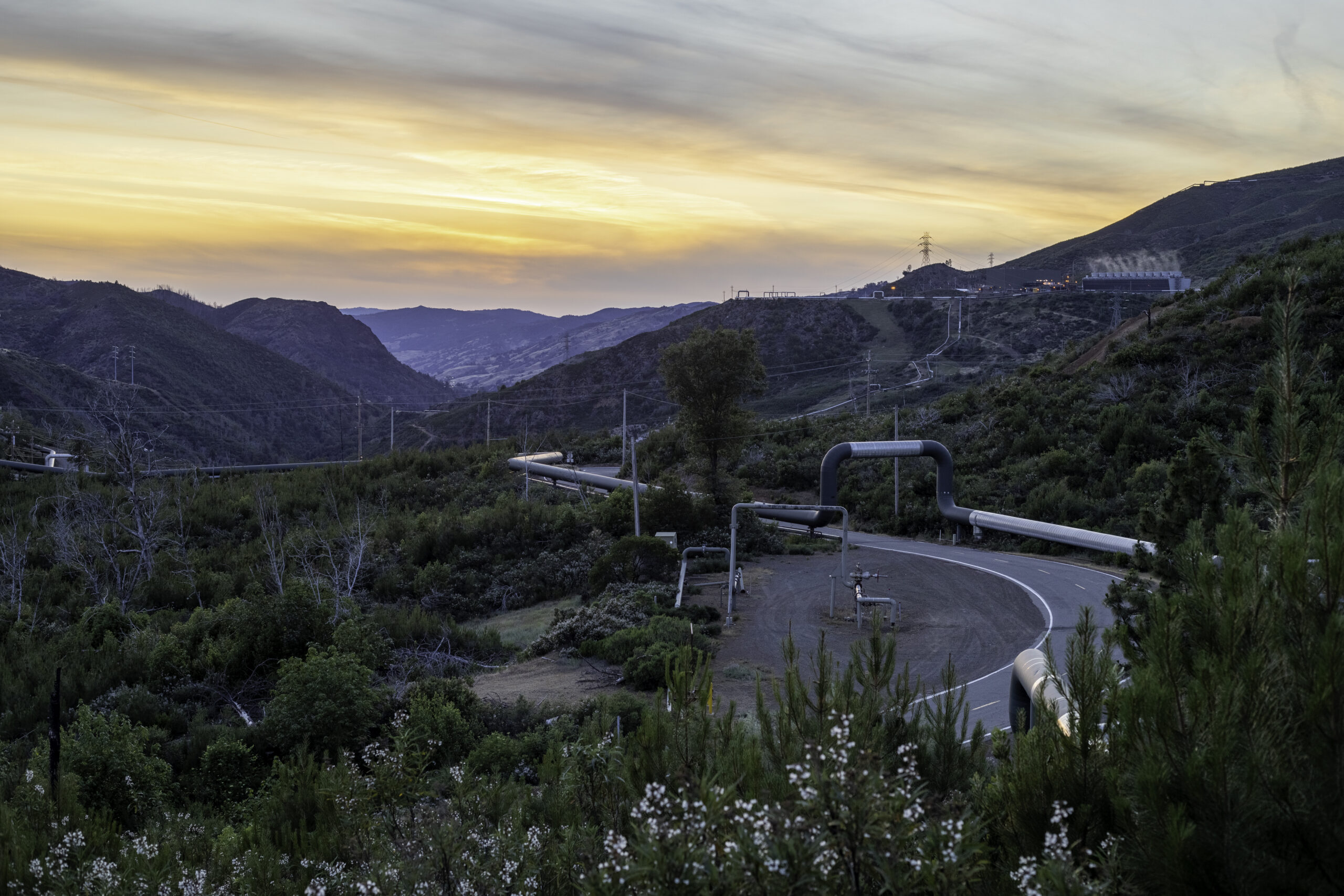Geothermal energy is a clean, sustainable, renewable energy source derived from the heat of the earth’s core. A geothermal resource occurs when water deep below the Earth’s surface is heated by exposure to hot, permeable rock, resulting in dry steam or hot water. This steam is then used to spin a turbine to generate renewable energy.
Calpine operates The Geysers, the largest complex of geothermal energy facilities in the world. At The Geysers, dry or superheated steam provides about 50% of California’s in-state geothermal power.
About The Geysers
Located in the Mayacamas Mountains, north of San Francisco, Calpine is harnessing naturally occurring steam field reservoirs below the Earth’s surface to make reliable, clean, renewable energy for homes and businesses across Northern California.

The Geysers has the current capacity to produce 725 megawatts of electricity around the clock – enough to power 725,000 homes, or a city the size of San Francisco.
Steam production wells, some deeper than two miles, are drilled to tap the naturally occurring steam. Once the steam reaches the surface, it is piped overland to a network of interconnected energy facilities, where it spins steam turbines that drive generators to produce clean, reliable electricity. The spent steam leaving the turbines is condensed and cycled through the cooling towers. Treated wastewater from local municipalities is injected underground to help replenish the geothermal reservoir. Calpine’s Geysers uses approximately 13 million gallons of recycled municipal water each day, eliminating the need to discharge this water into local waterways – another innovative environmental win-win.
To learn more about how Calpine is working to sustain this valuable natural resource for generations to come, visit Geysers.com.
